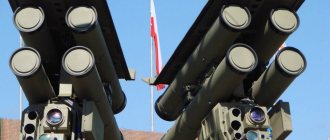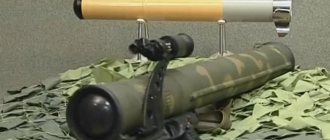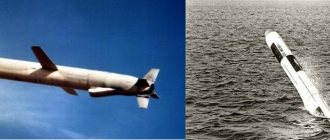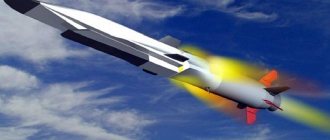How China acquired its own nuclear forces
The history of the formation of China's nuclear missile program began with the design and creation of medium-range ballistic missiles.
In the 60s of the last century, when relations between the USSR and the PRC were virtually severed, the leadership of the Chinese Communist Party came to the conclusion that confrontation with a nuclear power without its own nuclear weapons could lead, in the event of war, to the destruction of the state itself. As you know, on May 14, 1965, the first test of a nuclear charge with a yield of 35 kilotons was carried out, and on June 17, 1967, an atomic bomb with a yield of up to three megatons was dropped from an N-6 bomber (Chinese version of the Tu-16). Despite the fact that China thus joined the club of states possessing nuclear weapons, its leadership understood the fact that Soviet medium-range missiles R-12 and R-14 would reach the target faster than the N-6 with a thermonuclear bomb. Therefore, work on a ballistic missile capable of carrying a nuclear charge began in parallel with work on an atomic bomb.
The prototype of the first medium-range ballistic missile (MRBM) was the Soviet R-5 missile, and the design documentation of another Soviet R-2 missile, which in 1957, along with the documentation for the R-11 missile, was transferred to the PRC, was taken as the basis. The first launch of the Dong Feng-2 (DF-2) medium-range missile took place in 1964, and by the end of 1970, the Chinese People's Liberation Army (PLA) had 100 MRBMs capable of delivering a thermonuclear charge with a yield of 20 kilotons over a distance of 2,000 km. It is worth noting the fact that the Dong Feng-1 missile, created with the participation of Soviet specialists, had a flight range of up to 1,000 km.
In 1971, the PLA entered service with the Dong Feng-3 MRBM with a flight range of 2,500 km and a monoblock thermonuclear unit with a capacity of three megatons. Based on this missile, the two-stage DF-4 with a flight range of 4,500 km appeared, as well as the DF-5, the first silo-based intercontinental ballistic missile (ICBM), which could deliver a three-megaton warhead to a distance of 11,000 km. By 1985, China's nuclear missile potential was estimated at 250-300 silo-based, mobile and sea-based launchers.
Despite the fact that China acquired its own short-, medium- and intercontinental-range nuclear missiles, many military experts noted two significant shortcomings of the PRC's nuclear shield, due to which China could not withstand threats from nuclear powers - the USSR and the USA.
The first of them was that the hit accuracy, or circular probable deviation (CPD) from the target point, of the Chinese missiles was in the range of 1,500 - 3,000 meters. Apparently, this is why all Chinese ballistic missiles were equipped with megaton-class thermonuclear charges. The second drawback was the technology of the rocket engines and fuel systems, due to which the preparation time for launch took from 30 minutes to 2.5 hours from the alert state.
With such temporary standards, China could only partially carry out the retaliatory strike procedure, putting at risk of destruction both the missile launchers themselves and civilian and military installations responsible for the country's defense.
Area of responsibility of China's strategic nuclear forces
These shortcomings were also realized in China. Therefore, starting in 1980, they began to work on reducing the vulnerability of all components of China’s nuclear triad (nuclear weapon carriers) in order to ensure a retaliatory strike in any scenario of external aggression. One of the promising areas was the further improvement of technologies for creating MRBMs - work on the DF-21 missile ended in successful tests in the late 80s and since 1991 it began to enter service with the PLA. Currently, China's strategic nuclear forces (SNF) are armed with its more advanced modifications DF-21C, DF-21D and DF-21F, capable of delivering monoblock warheads with a yield of 90 to 500 kilotons over a distance of up to 2,700 km. The main task for these missiles is the elimination of missile defense position areas deployed in South Korea and Japan. The total number of DF-21 MRBMs in service with the PLA is 130-140 missiles.
In 2014, this arsenal was replenished with a new MRBM - DF-26, which replaces the DF-4 missile that served for almost 50 years and has a better CEP of 150-200 meters and solid propellant rocket engines. In addition, the DF-26 launches from a mobile launcher, making it difficult to destroy and hitting targets at a distance of up to 4,500 km. According to military experts, about 30 DF-26 missile systems should enter service with the PLA. By the way, starting with the DF-21, all medium-range missiles were “cured” of those two shortcomings that foreign military experts pointed out - new missiles began to be prepared for launch in a matter of minutes and hit the target more accurately than their previous classmates.
To date, the line of modern MRBMs is completed by a new development of the Chinese military-industrial complex - the DF-17 missile, equipped with a hypersonic glide warhead capable of carrying a thermonuclear warhead with a yield of 150-300 kilotons. The DF-17 warhead, created using Chinese controlled hypersonic technology, can hit strategic targets at a distance of 3,000-3,500 km. Obviously, its area of responsibility includes almost all US military bases deployed in the Asia-Pacific region (APR). At the parade dedicated to the 70th anniversary of the PLA, sixteen mobile launch systems with DF-17 were shown.
Thus, the total number of Chinese MRBMs may be about 200 launchers by the end of 2020, capable of launching missiles at a range of 2,500 - 4,500 km. Taking into account 140 silo-based, rail- and sea-based ICBMs (DF-5A, DF-31, DF-41 and JL-2), the number of Chinese MRBMs in terms of the number of nuclear weapons carriers is half the number of deployed US ICBMs. If we take into account only ICBMs that threaten the continental parts of China and the United States, then the Chinese are five times inferior to the Americans.
What kind of threat to the United States from China can we talk about?
Roughly speaking, China can cause significant damage to the territory of the United States, and the United States can destroy the entire territory of China two or three times. In addition, the United States stands on the principle of a preventive strike, while China has formed a modern nuclear arsenal for a guaranteed retaliatory strike. As they say - feel the difference!
Despite this, since 2008, the Pentagon leadership, and then the Congress and Senate, have formed an opinion about the “Chinese nuclear threat,” which, according to experts from the RAND Corporation, can be contained by the deployment of American-made MRBMs, because attempts to “butt heads” between Russia and China have completely failed.
Let me explain to the uninformed reader that there were several such attempts (strategic scenarios). In the early 90s, when weak Russia again began to be friends with the United States, joint American-Russian military operations in the event of a war with China were being worked out in the depths of military research institutes. In the early 2000s, the area of confrontation was shifted to the economy, after 2008 - to the area of military-political operations of a hybrid war. Remember how many media publications there were about China calling Russia a “rotten apple” and laying claim to the northern territories. An echo of this hybrid war today is the information that China has cut down all the forest in Siberia and is ready to drain Baikal for its own needs. All this turned out to be lies and propaganda, when they make elephants out of flies.
Let's return to the present day. On December 13, the United States tested a medium-range missile. Despite the fact that it flew only 240 km, its launch showed the whole world that the United States had “crossed the Rubicon” and in the near future launchers with MRBMs will appear both in Europe and the Asia-Pacific region.
In one of my articles, I already reported on where American MRBMs could be deployed, which, together with medium-range cruise missiles (MRCMs) under the cover of aerospace defense systems (air defense + missile defense), will deter the threat of Russia and China:
Reference. US bases
- in Asia-Pacific
1. Guam Island (BRSD + East Kazakhstan region). There are two American bases on the island - Andersen Air Force Base (with the possibility of basing B-52 strategic bombers) and the Apra Harbor Navy Base (it can easily accommodate AUG and nuclear submarines with ICBMs), occupying a third of the island’s area.
2. Okinawa Island with the US Air Force base - “Kadena” (VKO+KRSD)
3. US bases on the island of Honshu (EKO+KRSD)
4. Missile defense system in Alaska (AKR)
5. Taiwan Island (EKO)
- in Europe
6. Missile defense and air defense systems in Poland and Romania (VKO+KRSD)
7. Ramstein Base (Germany) - a candidate for the appearance of MRBMs
I also wrote that the combined nuclear arsenals of the United States and its allies (France and Great Britain) number about 3,100 nuclear warheads, against 2,700 warheads of Russia, China, India and the DPRK combined. There is, however, a small nuance - the unification of NATO nuclear forces was outlined at the July NATO summit (2018), but the unification of the nuclear arsenals of Russia, China, India and the DPRK does not yet exist in nature.
The appearance in the Asia-Pacific region of American MRBMs and MRBMs capable of carrying a tactical nuclear warhead will critically change the balance of power in the region. To the five-fold superiority of US ICBMs will be added the same multiple superiority of medium-range ballistic missiles, i.e. By 2030, more than 2,000 additional nuclear weapons carriers could be deployed near China's borders, hitting targets at a distance of 2,000 to 7,000 km. The targets for these missiles, according to the Global Instant Disarming Strike Strategy, will be the position areas of China's ICBMs and MRBMs, as well as strategic facilities of the civil and military infrastructure of government, including all military facilities in the South China and East China Seas.
An additional factor that should put pressure on an intractable China is the involvement of NATO in activities forcing the PRC to conclude treaties limiting nuclear weapons. This “pressure” was due to the fact that China had created a new ICBM.
“A few weeks ago they (China) demonstrated a new intercontinental ballistic missile capable of reaching Europe and North America. So we have begun to look at how we can include China in appropriate arms control mechanisms in the future,” Ian Stoltenberg told reporters at his final press conference after the NATO leaders' meeting in London. “This process is not finished yet.”
Trump doesn't understand Chinese pragmatism
Despite the fact that pressure on China may remain ineffective, Donald Trump remains optimistic about concluding a trilateral nuclear weapons treaty. However, he clearly does not understand Chinese pragmatism. China knows the capabilities of its nuclear arsenals, but it does not intend to participate in the arms race that American experts are counting on.
Pressure on China from the United States and NATO will lead to the opposite effect - a convergence of the positions of China and Russia on nuclear security issues.
This year, Russia has already begun helping China improve its missile attack warning system (MAWS). In the fall of 2019, joint strategic aviation exercises were held, and earlier at the Center-2019 exercises, more than 1,600 Chinese military personnel, 300 different types of equipment and weapons, and about 30 aircraft took part in joint combat training operations.
Despite the fact that the fate of the START III treaty only indirectly concerns the interests of China, the leadership of this country understands that when revising the treaties that determine global stability, the United States will not leave China on the sidelines. The confrontation will clearly not end with just a trade war. Events in Hong Kong, as an element of a hybrid war, showed that China is on the verge of making fateful decisions. At the same time, we are witnessing the formation of a military-political alliance between Russia and China, in which the nuclear shield of the PLA can complement the nuclear shield of the Russian Strategic Missile Forces. The emerging puzzle of joint defense from the armed forces of Russia and China can become a guarantor and a new center of international security.
ATACMS operational-tactical missile system
The artillery portion of the upgraded M270 launcher, mounted on a tracked base of an American infantry fighting vehicle, includes:
- Fixed base mounted on chassis body
- A rotating platform with a swinging part attached to it, in the armored box-shaped truss of which there are two TPKs
- Loading and guidance mechanisms.
M270 launcher (see
) does not have traditional permanent guides. For loading, two equipped transport and launch containers (mass TPK-422 kg, dimensions 4166x1051x837 mm) of disposable use (each with 6 NUR or 1 OTR ATACMS) are placed in the sockets of its armored box-shaped truss (the swinging part of the launcher). They are a package of six fiberglass tubular guides mounted in two rows in a box truss made of aluminum alloy. TPKs are equipped with missiles at the manufacturing plant and are sealed, which ensures the safety of the missiles without maintenance for ten years. Practically no pre-launch preparation of missiles for firing is required.
The launcher is reloaded using two autonomous charging mechanisms (with electromechanical drives) mounted on the launcher in a box truss above the TPK sockets. The operation is carried out by one or two payment numbers using a remote control. At zero elevation angle, the loading mechanism, using a winch, lifts the TPK from the ground up to the stop and pushes it into the socket of the box truss.
The ATACMS operational-tactical missile makes its flight along a so-called semi-ballistic trajectory, when its initial acceleration is carried out along a pre-programmed rigid trajectory, and the entire subsequent flight after reaching its apogee occurs in a controlled mode. The missile is controlled using aerodynamic rudders based on signals from the on-board control system, which continuously determines the expected point of impact and generates appropriate commands to align it with the target. In this regard, at short and medium ranges the OTR flight trajectory has a pronounced “second apogee”. In addition, in the interests of hiding the coordinates of the starting position, its launch can be carried out at an angle to the firing plane at a range less than the maximum.
OTR ATACMS currently has several versions, which differ primarily in the type of warhead, control system and firing range.
1. Block I (MGM 140A)
MGM-140A missile (see.
) has an M39 cluster warhead equipped with M74 submunitions designed to destroy enemy personnel and lightly protected materiel. Each missile is equipped with approximately 950 M74 submunitions and has a firing range of up to 165 km. The main purpose of a cluster warhead is delivery to a given area and distribution of the payload. The warhead consists of an aluminum shell with power elements, front and rear bulkheads. In the center there is a cylindrical channel, inside of which there is a cable route. The warhead contains a detonation system that ensures destruction of the shell and disengagement of submunitions at the required time.
The M74 submunition is a steel shell filled with explosive. Upon impact with a target and detonation, each submunition produces a large number of steel fragments that are effective against targets such as trucks, lightly armored vehicles and radar antennas. The radius of destruction of manpower is 15 m. This ammunition is not effective against armored vehicles.
The MGM-140 block 1 missile was tested in 1990. During the tests, unsatisfactory results were obtained in terms of hit accuracy, however, in general the system was assessed as quite effective. MGM-140 block 1 was deployed and used during Operation Desert Storm.
2. Block IA (MGM 140B)
MGM-140B missile (see.
) is an operational-tactical missile with a flight range increased to 300 km. The increase in flight range was achieved by reducing the payload - instead of 950 M74 submunitions, the MGM-140B missile carries 275-300 M74. To improve accuracy, the inertial control system is supplemented with a NAVSTAR satellite navigation subsystem. The probable circular deviation for this model is no more than 25m. If the satellite navigation subsystem does not operate for some reason, block 1A is controlled only by the inertial control system. It is possible to install additional thermal protection on the nose cone of the MGM-140B missile. The missile is launched using a modernized M270 or M270A1 launcher. The upgraded M270 launcher is equipped with satellite positioning equipment; the M270A1 launcher also has an improved fire control system, reinforced mechanical parts and a loading device.
ATACMS block 1A tests took place in August and September 1996. During the tests, a number of deficiencies in the missile control system were identified. On June 25 and December 3, 1997, the modified rocket successfully passed flight tests. In April 1996, a program for the production and acquisition of 70 ATACMS block 1A missiles was signed.
To establish the required dimensions, it is provided
glider block 1A.
Based on the Block IA missile, an OTR variant has been developed, designated Block IA Unitary, with a flight range of up to 300 km and a new unitary warhead weighing 227 kg.
3. Block II (MGM 164A)
MGM 164A missile (see
) is an operational-tactical missile with a range of up to 140 km, designed to destroy moving armored targets, as well as to destroy well-protected enemy firing positions and important supply nodes. To perform such tasks, this modification is equipped with a BAT (see description).
At the moment, an improvement has been made to the BAT combat element, called P3I BAT. It is a modernized version of BAT, which retains all the main physical characteristics and dimensions. The changes affected mainly the set of targets to be hit. It became possible to hit armored targets, both moving and static, targets of different temperatures. The electronic components of BAT have also undergone changes. Sensors have become less sensitive to difficult weather conditions and electronic warfare.
The target is hit in the following sequence:
- Inside the compartment with combat elements there is a special air bag. As the rocket passes through apogee, pressure is applied to the air bag and the BAT separates. Separation can occur at subsonic and supersonic speeds.
- BAT stabilizes its movement by twisting around an axis of symmetry, then reduces its speed using its means.
- After all the preliminary mechanical operations, the software comes into play. Target selection occurs. Each of the BATs operates in its own predetermined sector, into which the entire affected area is divided.
- After the targets are analyzed, pursuit and defeat occurs using a modern tandem cumulative warhead.
There is information that some BATs were equipped with GP transmitters and video equipment to receive information from the battlefield.
4. Block IIA (MGM 164B) - OTR is a modification of Block II with an increased flight range, which was achieved due to the reduced mass of the warhead. Instead of 13 BAT, it carries 6 modernized P3I BAT.
A further development of the MGM 164 missile is the development of a forward-looking, modular, flexible system designed to integrate the entire complex of high-precision combat weapons into Block II. In the course of modern combat operations, with a fleeting change in the combat mission, it now becomes possible to quickly change the combat equipment of a missile directly in the field, using various ammunition. As can be seen from the figure, the system has the form of a drum with combat elements placed around the circumference.
5. Block III is a promising operational-tactical missile with a new warhead with combat elements that have the ability to penetrate the ground. A design is proposed consisting of a Mk4 nuclear warhead body (used to equip the Trident-1 and Trident-2 SLBMs), inside of which there is a penetrating type combat element loaded with a conventional explosive, and a flight control system at the final trajectory. Such missiles are designed to hit well-protected objects (underground control centers, hangars, etc.) and have a firing accuracy of about 10 m.
Additionally, work is underway on a new solid-fuel rocket engine, which will increase the range to 500 km, which is the limit under the INF Treaty of 1989.
Tests carried out in 1994 confirmed the fundamental feasibility of a mobile lightweight version of ATACMS, designated HIMARS (Hight Mobility Artillery Rocket System). HIMARS for the ATACMS missile is a launch container with one missile on a wheeled all-terrain chassis, which is also a launcher. The total weight of the system is about 13,000 kg, which will make it possible to use C-130 aircraft for its transportation to the combat zone. Thanks to modern equipment, the time to transfer to a combat position after unloading from an aircraft is 10 minutes.
In parallel with the work discussed above, the US Department of the Navy led R&D to create a shipborne version of the missile system, designated NTACMS, which was supposed to be used for fire support for amphibious operations. Currently, this work has been suspended, but the emergence of new modifications of the ATACMS missile, which have broad combat capabilities, according to American experts, will contribute to their resumption. The NTACMS system for launching OTR provides for the use of modified Mk41 vertical launch systems, which are equipped with Ticonderoga-class guided missile cruisers and Orly Burke-class guided missile destroyers. The technical feasibility of the project was confirmed in late 1996 during experiments conducted at the White Sands test site. At the same time, the US Navy command is considering the option of placing such OTR on board multipurpose submarines and Ohio-class SSBNs in the event that the Trident-1 missiles are removed from them.




